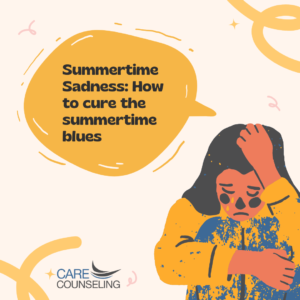 Seasonal affective disorder (SAD) is a type of depression that usually affects people during the winter months when there is less sunlight. However, there is also a lesser-known form of SAD that affects people during the summer months. This condition can be just as debilitating as winter SAD, but the symptoms and coping strategies are often different.
Seasonal affective disorder (SAD) is a type of depression that usually affects people during the winter months when there is less sunlight. However, there is also a lesser-known form of SAD that affects people during the summer months. This condition can be just as debilitating as winter SAD, but the symptoms and coping strategies are often different.
What is Summer SAD?
Summer SAD is a type of seasonal affective disorder that typically occurs during the summer months. It is characterized by feelings of depression, anxiety, and irritability that are often accompanied by physical symptoms such as insomnia, weight loss, and decreased appetite. While the exact cause of summer SAD is unknown, it is believed to be related to changes in the amount of sunlight and heat during the summer months.
Coping with Summer SAD
If you experience summer SAD, there are several strategies that you can use to cope with your symptoms. Here are a few ideas to get you started:
- Get Plenty of Sleep
One of the most effective ways to cope with summer SAD is to make sure that you are getting plenty of sleep. Lack of sleep can exacerbate feelings of depression and anxiety, so it is important to establish a regular sleep routine and stick to it. Try to get 7-8 hours of sleep each night and avoid staying up late or sleeping in too late in the morning.
2. Stay Cool
Heat can make symptoms of summer SAD worse, so it is important to stay cool. This might mean spending time indoors in air-conditioned spaces, taking cool showers or baths, or wearing lightweight, breathable clothing. You might also try using a cooling pad or ice pack to help you feel more comfortable.
3. Stay Hydrated
Dehydration can increase feelings of depression and anxiety, so it is important to stay hydrated during the summer months. Drink plenty of water throughout the day, and avoid sugary or caffeinated drinks, which can make you feel more anxious.
4. Practice Mindfulness
Mindfulness is a practice that involves paying attention to the present moment without judgment. It can be a helpful tool for coping with symptoms of summer SAD. Try practicing mindfulness meditation, or simply take a few moments each day to focus on your breath and observe your thoughts and feelings without getting caught up in them.
5. Stay Connected
Social isolation can make symptoms of summer SAD worse, so it is important to stay connected with friends and family. Try to reach out to loved ones regularly, even if it is just through a phone call or text message. You might also consider joining a support group for people with SAD.
6. Consider Light Therapy
Light therapy is a treatment that involves exposing yourself to a special light box that simulates natural sunlight. While light therapy is typically associated with treating winter SAD, it can also be helpful for summer SAD.
7. Talk to a Mental Health Professional
If you are struggling to cope with the symptoms of summer SAD, it is important to seek help from a mental health professional. They can provide you with a diagnosis, offer treatment recommendations, and provide ongoing support as you work to manage your symptoms. You might also consider talking to your doctor about whether medication might be helpful for you.
Summer SAD is a real condition that can be just as debilitating as winter SAD. However, with the right strategies and support, it is possible to manage your symptoms and enjoy the summer months. If you are struggling with summer SAD, don’t hesitate to reach out for help. With the right treatment and support, you can feel better and enjoy all that summer has to offer.
We’re Here to help
Our wellness experts will be happy to take care of you. You can CLICK HERE to schedule an appointment now or call (612)223-8898.
Meet Clinicians
We’re united by our commitment to providing effective, relevant, and innovative mental health support at all stages of your journey. Click Here to find a therapist or find out more about who we are, where we come from, and how we live out CARE’s mission every day.
The professionals at CARE are actively collecting and creating resources to help with what you need and address frequently asked questions. We’re Here for You.



